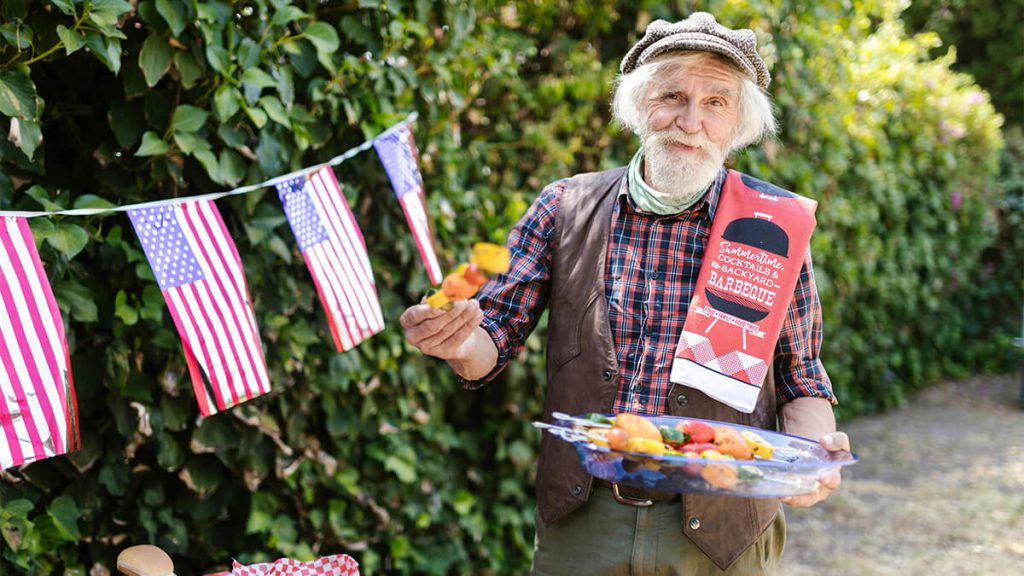Whether it’s the unwavering use of the imperial measurement system or the ubiquitous on-the-go coffee culture, let’s explore the peculiarities that define American life, highlighting the cultural idiosyncrasies that can seem baffling to those from other countries.
Using the Imperial Measurement System
In a world predominantly navigating by kilometers and kilograms, the U.S. stands out, clinging to miles and pounds. It is also one of only three countries that steadfastly use the imperial system. This peculiarity often leaves the global community scratching their heads, bemused by our commitment to tradition over uniformity.
Constant TV Commercials
American TV is more a platform for commercials than content, which bewilders many outside its borders. For a 30-minute show, viewers navigate through roughly four commercial breaks, often unevenly distributed. This includes a jarring leap from the final scene to the ads, then abruptly into the next program’s opening moments.
Sales Taxes Surprise
American stores hide a financial twist that catches many international visitors off guard: added sales tax at the register. Unlike many countries where tax is neatly included in the shelf price, in the U.S., the price tag is just the beginning. You only learn the final retail price at checkout.
Tipping Service Professionals
Tipping is a quintessential American custom, leaving many international visitors perplexed. Unlike other countries where the practice is either optional or uncommon, not tipping in the U.S. is a major no-no. The custom is so ingrained that tourists are often advised to comply to avoid a potential social faux pas.
A College Education Has Strings Attached
In the U.S., the road to higher education often leads through a mountain of debt, a stark contrast to countries offering free college tuition. This financial burden for a degree baffles many globally, as American students frequently shoulder thousands in loans, investing in a future with education’s hefty price tag.
Supersized Portions
The colossal size of American portions, from restaurant dishes to fast-food sodas, astonishes foreign visitors. This penchant for supersizing extends beyond food, reflecting a culture of abundance that often leaves international guests marveling at the scale of consumption. It’s a distinct aspect of American life, where bigger usually means better.
Free Refills
The American expectation of free drink refills stands out globally, surprising many from countries where such generosity is rare. Ingrained in the U.S. dining culture, this norm contrasts sharply with practices elsewhere, such as in France, where unlimited refills were banned in 2017, highlighting a unique aspect of American hospitality.
Writing Dates Month First
The U.S. date format, month-day-year, puzzles those outside its borders, where day-month-year reigns. This American convention, seemingly flipping the logical order, exemplifies the cultural quirks that distinguish the U.S. It’s a small but telling detail that reflects broader differences in perspective, often leaving international friends scratching their heads in bemusement.
Superstocked Pharmacies
U.S. pharmacies are a cultural curiosity, blurring the lines between a drugstore and a convenience store. The concept of pharmacies doubling as mini supermarkets is distinctly American, a unique approach to retail that merges health care with everyday shopping convenience. It always leaves visitors from abroad both amazed and perplexed.
Doggy Bags
Our practice of taking leftovers home from restaurants without a second thought contrasts sharply with dining customs elsewhere. In many countries, requesting a “doggy bag” might be considered unusual or impolite. The concept was so foreign in France that they needed legislation to promote “doggy bags” to combat food waste.
All Work, Very Little Play
With long hours, lunches eaten at desks, and minimal use of available vacation time, the American work ethic is admired and questioned. Contrast this with countries where six weeks of paid vacation is standard; the difference becomes stark. This relentless work culture reflects a deep-seated value on productivity and success.
Baby Showers
Baby showers, a cherished U.S. tradition, often perplex those from other cultures. This festive gathering, marked by gifts and games, contrasts with global customs where such pre-birth celebrations are uncommon or viewed as inappropriate. The world’s diverse attitudes toward pregnancy and communal support make baby showers a uniquely American phenomenon.
Lots of Coffee On-the-go
The American penchant for oversized to-go coffees sets us apart from European coffee culture; they savor smaller servings seated. This contrast in consumption habits reflects broader cultural differences. While Europeans indulge in quick espresso shots, we embrace the convenience of large takeaway cups, fueling our on-the-go lifestyles, caffeine in hand.




